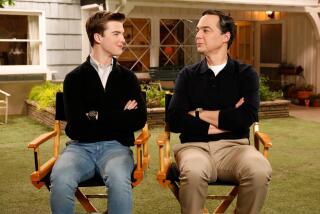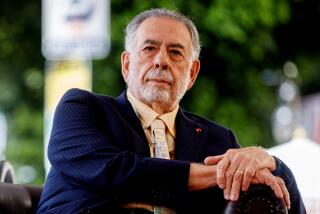Lawn Order
Louis XIV did not think small. Neither did his landscape designer, Andre le No^tre. His magnificent gardens at Versailles, Vaux-le-Vicomte, Chantilly, Saint-Germain-en-Laye, Les Tuileries, Saint-Cloud, Sceaux, Marly and Courances--along with the palaces and cha^teaux they adorned--exemplified the grandeur of 17th century France.
Le No^tre’s innovative work--designed both to be seen as grand vistas, conveying a pleasing sense of symmetry and harmony to the French rationalist mind, and to surprise those who strolled the terrain with sculptural embellishments and twists of perspective--influenced gardening throughout France and beyond.
Scripps College professor Eric Haskell has long been a scholar and devotee of Le No^tre’s gardens.
“In a single glance, they provide us with an indelible notion of how the landscape was used as a device for mapping out an agenda of power and prestige,” he has written in a new book. “The creation of new spatial dynamics redefined an entire culture in such profound ways that these landscapes have become keys to our understanding of Grand Siecle culture.”
Now Haskell has joined forces with British photographer Michael Kenna to present a new view of Le No^tre’s work in two exhibitions. “Le No^tre’s Gardens: Photography by Michael Kenna,” a show of 40 black-and-white photographs, opens Tuesday at the Huntington Library’s Virginia Steele Scott Gallery in San Marino and runs through April 20. Haskell’s book by the same name, containing his essay and historical notes on the gardens, plus reproductions of all 40 photographs, serves as a catalog for the show.
Kenna, who began photographing French gardens in the mid-1980s, brings his own vantage point to Le No^tre’s work. As well as recording the gardens’ grand scale and symmetrical design, he instills an anthropomorphic quality in cone-shaped bushes and captures figurative sculptures peeking out of the landscape. In one particularly striking image of Versailles, the “Chariot of Apollo” sculpture group is so crisply reflected in a pond that it is difficult to distinguish the bronzes from their mirror images.
While the Huntington exhibition provides an overview of Le No^tre’s work, a smaller show at Scripps’ Clark Humanities Museum in Claremont (to April 11) focuses on one garden that no longer exists. “Privileged Precincts: The Pavilions & Gardens of Marly” presents period engravings of a country retreat where Louis XIV escaped from Versailles, along with Kenna’s recent photographs of the verdant site.
In conjunction with the exhibitions, Haskell and Amy Meyers, the Huntington’s curator of American art, have organized a two-day symposium, “Formalism in the Garden.” The program, featuring talks by garden historians from across the country, will be held at Scripps on April 11 and at the Huntington on April 12. Reservations are required for the symposium: (909) 621-8326.
*
NEW PLANT/NEW TALK: Otis College of Art and Design is kicking off its 1997 Trustees’ Lecture Series on late Modern and Postmodern art Feb. 25 at 8 p.m. with “Minimalism/Post-Minimalism.” Speakers are art historian Catherine Schear, a doctoral candidate at the City University of New York, and Los Angeles art dealer Patricia Faure. They will discuss the development and manifestations of a movement that has deeper roots in Southern California than might be expected, Faure said.
“Expressionism and the Reemergence of Painting,” featuring Schear and artist Tom Wudl, is scheduled for March 4. The final program is “Difference and Feminist Art,” presented by San Francisco art historian Jeannene Przyblyski and Los Angeles artist and educator Nancy Barton.
The lectures will be given at Otis’ new Westside campus, 9045 Lincoln Blvd. The campus will be open for self-guided tours before each program, at 7:30 p.m. Cost of the series subscription is $75. Information: (310) 665-6860.
*
L.A. AS MUSEUM KING: “Los Angeles, often called the entertainment capital of the world, has long been known for its theme parks and attractions related to the movie industry. What is less known is that Los Angeles has more museums than any other city in the world.” So begins the introduction to the new $19.95 paperback book “Museum Companion to Los Angeles.”
The book, written by Borislav Stanic and published locally by Museon, lists historic houses, libraries, special collections, botanical gardens and zoos, along with traditional museums.
Using the International Council of Museums’ definition, Stanic recognizes as museums “any permanent institution which conserves and displays for purposes of study, education and enjoyment collections of objects of cultural or scientific significance.” He includes everything from the L.A. County Museum of Art and the Norton Simon Museum to the Lomita Railroad Station and Dr. Blyth’s Weird Museum in Hollywood, which displays human oddities.
Other cities that have a similarly varied and vast range of attractions may dispute Stanic’s claim of L.A.’s preeminence. But he has come up with an impressive list of 260 institutions, which should be a boon to the city’s promoters, as well as to visitors and residents who are certain to learn something from this guide.
Designed with user-friendly information, including parking facilities and Thomas Guide locations, the “Museum Companion” contains lively descriptions of the institutions and lots of small black-and-white illustrations. Nit-pickers will find a few errors--LACMA opened in 1965, not 1968--but Stanic has compiled a remarkable reference book.
Information: (310) 788-0228.
More to Read
The biggest entertainment stories
Get our big stories about Hollywood, film, television, music, arts, culture and more right in your inbox as soon as they publish.
You may occasionally receive promotional content from the Los Angeles Times.






